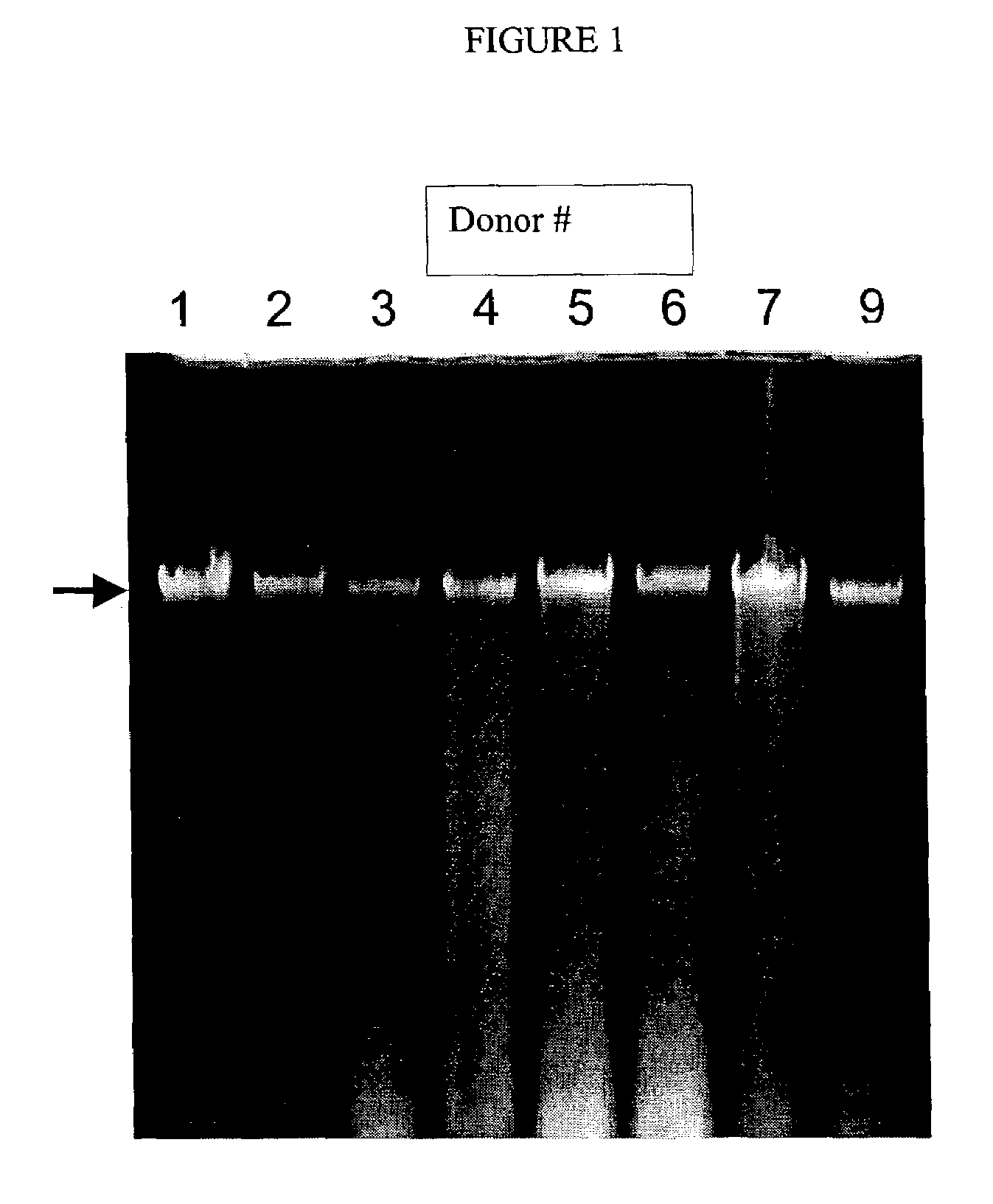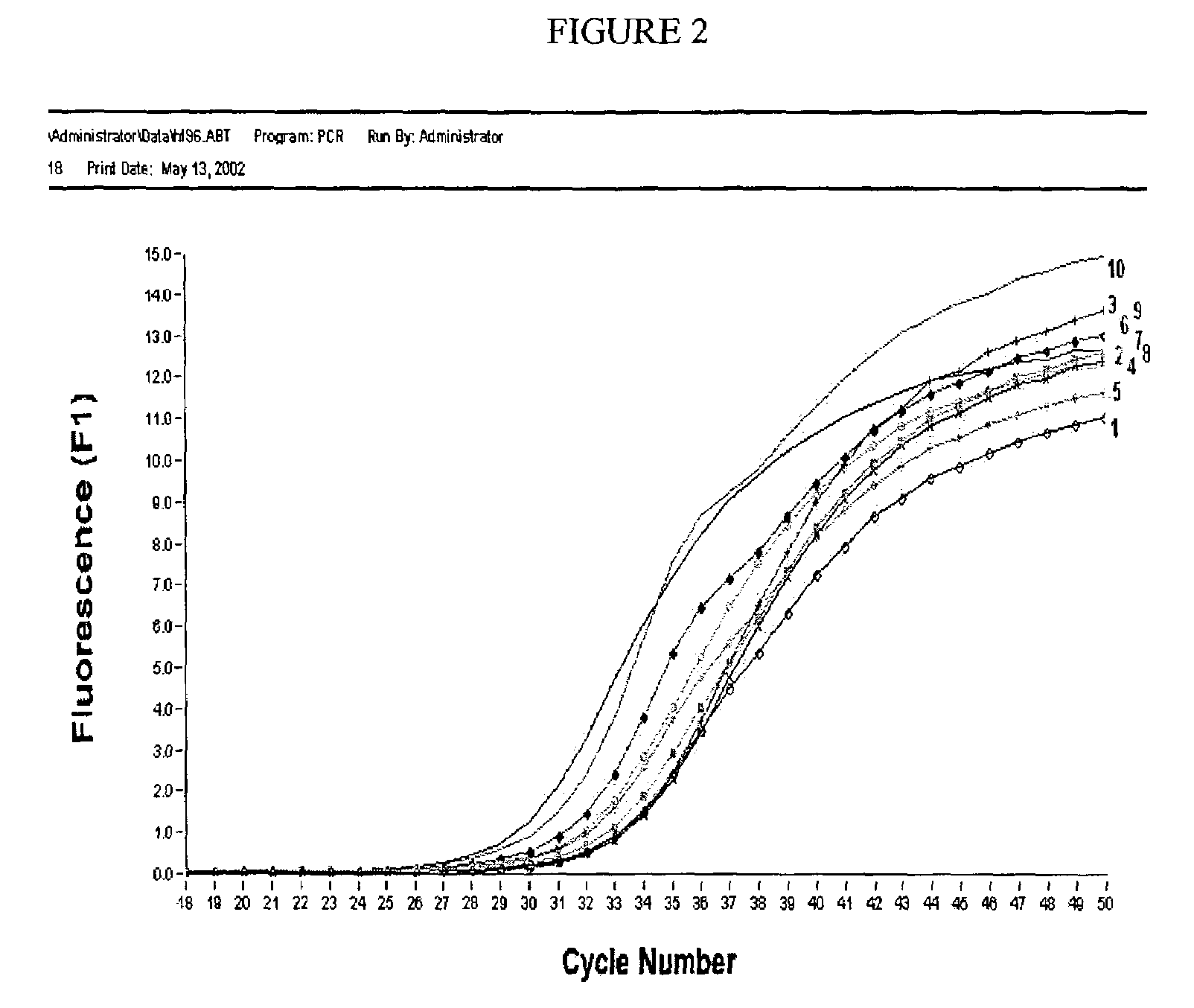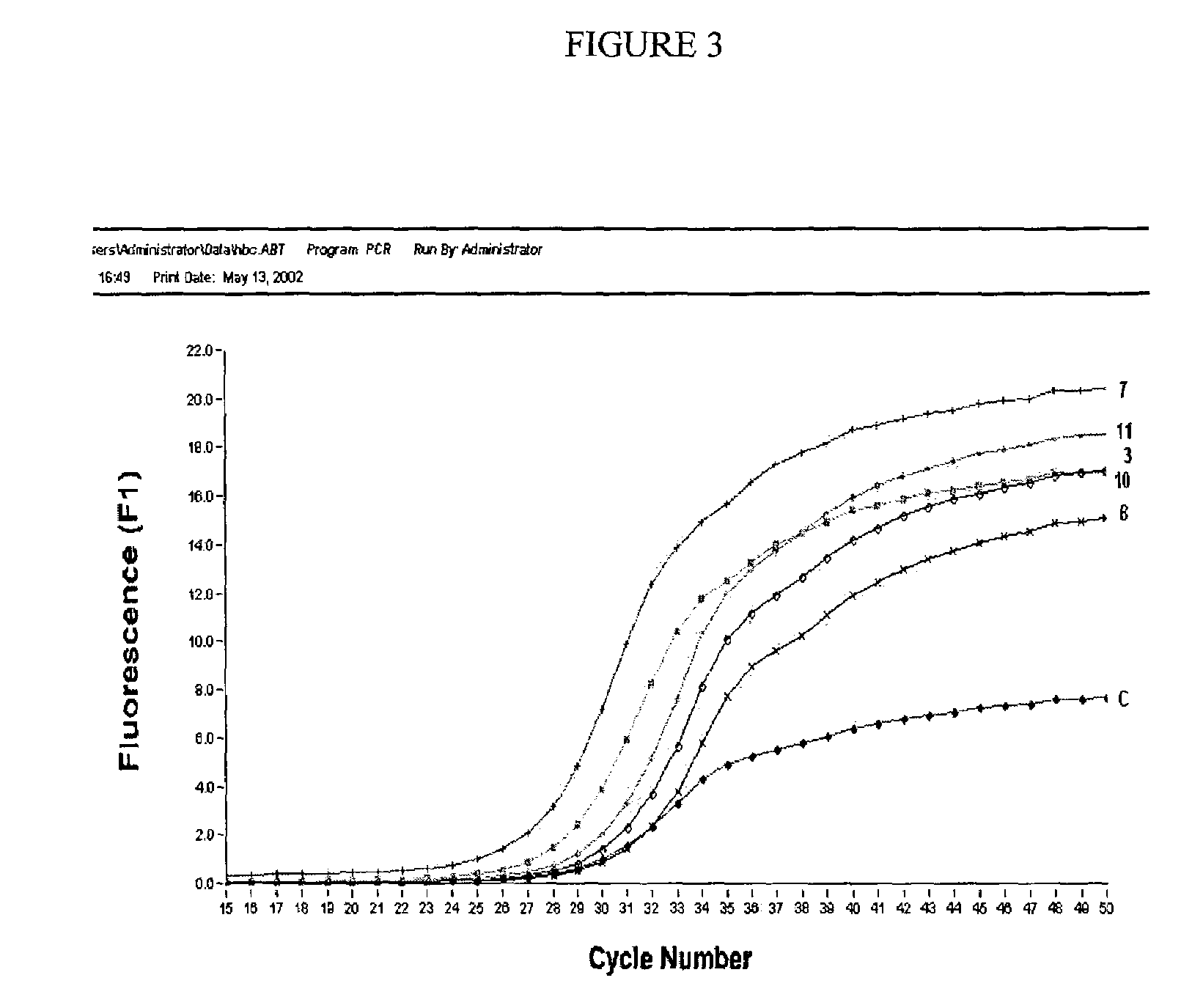Compositions and methods for obtaining nucleic acids from sputum
a nucleic acid and sputum technology, applied in the preparation of sugar derivatives, aminosugars, sugar derivatives, etc., can solve the problems of reducing the quality of dna, stressing and pain of donors, and venous blood being not the ideal source of dna, so as to facilitate the extraction of nucleic acids contained, the effect of reducing the viscosity of mucin
- Summary
- Abstract
- Description
- Claims
- Application Information
AI Technical Summary
Benefits of technology
Problems solved by technology
Method used
Image
Examples
example 1
Protocol for Obtaining Saliva Samples from Subjects Capable of Following Instructions
[0106]The subject is instructed to wait for a period of 20-30 minutes before last eating. The subject will brush his teeth without using toothpaste, if possible. The subject will rinse his mouth vigorously with 50 mL of cool or tepid water. The subject will then spit saliva into the special collection tube until the level of saliva reaches the 2 mL mark. This may take several minutes. If the subject finds that he is unable to deliver sufficient saliva, he will be given a cube of table sugar to chew, and told not to be concerned if some of the sugar is spit into the tube.
[0107]When the required amount of saliva is collected, it is mixed with 2 mL of a nucleic acid-preserving composition. The precise way this will be introduced will depend upon the container design.
[0108]Once the composition is introduced, the cap is attached to the container and tightened to seal it securely. The container is then vi...
example 2
Protocol for Obtaining Saliva Samples from Babies, Very Young Children and Infirm Adults Incapable of Following Instructions
[0110]A rubber or plastic tube or nipple will be introduced into the mouth, attached to a sponge, suction bulb or small syringe, and kept in the mouth for several minutes until visible drooling occurs. A bit of sugar cube will be placed in the mouth to stimulate saliva if necessary. The responsible adult will wear disposable gloves provided for the purpose to avoid contamination with his / her DNA. The responsible adult will draw saliva into the bulb or syringe and transfer it into the collection container. The DNA preserving / extraction composition is introduced and the container is capped and sealed. The tube is vigorously shaken for 1 minute.
example 3
Preparation of a Nucleic Acid-Preserving Composition
[0111]The composition of the nucleic acid-preserving solution used in Examples 4-6 is 33 mM TRIS-HCl, 0.67 M urea, 0.67 M LiCl, 0.6% sodium dodecyl sulfate, 3.3 mM CDTA, 30% ethanol, and 0.25 M sodium ascorbate, all adjusted to a final pH of 8.0. In the examples, the composition is mixed with an equal volume of saliva. Subsequent to these experiments, it has been found that a composition which is 0.3 M TRIS-HCl, 0.67 M urea, 0.67 M NaOAc, 0.6% sodium dodecyl sulfate, 3.3 mM CDTA, 30% ethanol, and 0.1 M sodium ascorbate, all adjusted to a final pH of 8.0, stabilizes DNA for longer periods of time.
PUM
| Property | Measurement | Unit |
|---|---|---|
| temperature | aaaaa | aaaaa |
| pH | aaaaa | aaaaa |
| pH | aaaaa | aaaaa |
Abstract
Description
Claims
Application Information
 Login to View More
Login to View More - R&D
- Intellectual Property
- Life Sciences
- Materials
- Tech Scout
- Unparalleled Data Quality
- Higher Quality Content
- 60% Fewer Hallucinations
Browse by: Latest US Patents, China's latest patents, Technical Efficacy Thesaurus, Application Domain, Technology Topic, Popular Technical Reports.
© 2025 PatSnap. All rights reserved.Legal|Privacy policy|Modern Slavery Act Transparency Statement|Sitemap|About US| Contact US: help@patsnap.com



